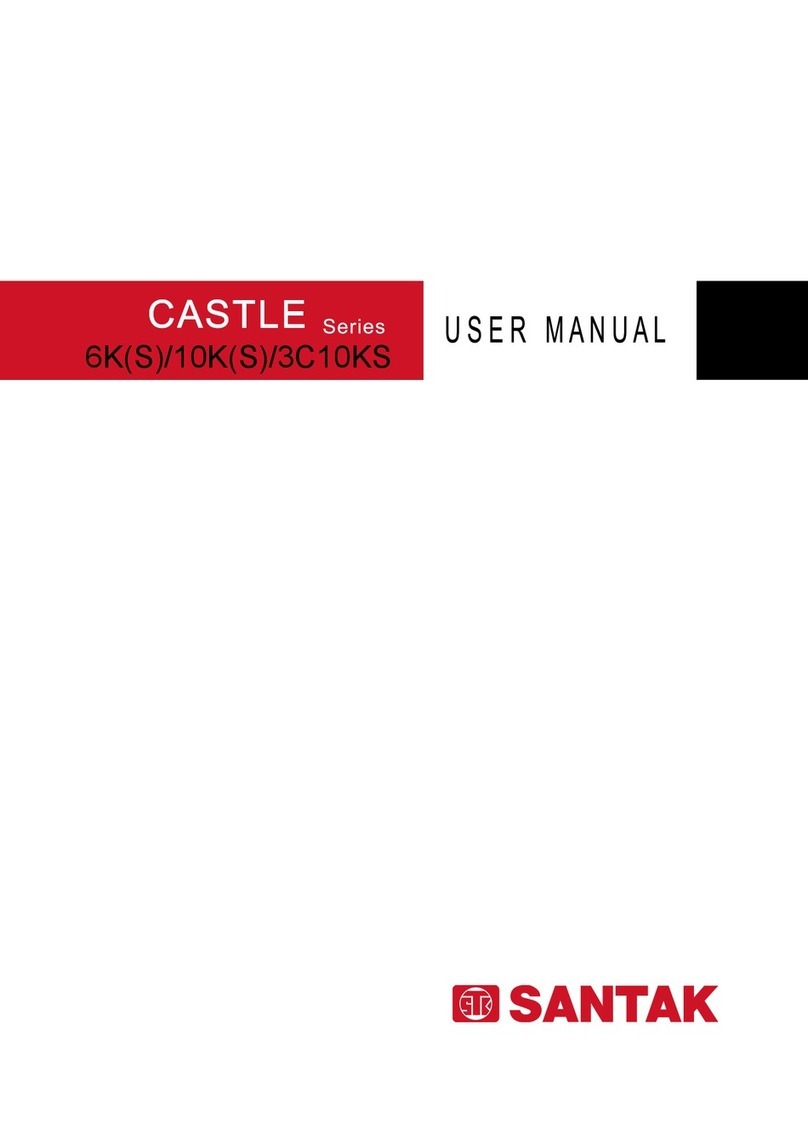Safe declare
Operation safety
1. In the use of the product before, please read “safety declare”, to ensure the correct and safe to use. And please
keep the manual.
2. Pay attention to the all warning when operating, according to the requirements for operation.
3. Avoid direct sunlight, rain or in the wet environment using this equipment.
4. This equipment can not be installed near the heat source area.
5. Placed around the UPS, should have a safe distance, ensure ventilation. When installation, please refer to
specification.
6. When cleaning, please use the dry goods to wipe.
7. In case of fire, please correct use of dry powder fire extinguisher to extinguish fire. If the use of liquid fire
extinguisher will have a risk of electric shock.
8. Before installation should consider floor bearing capacity on the machine and battery.
Electrical safety
1. Before starting ups, please confirm grounding correctly, and check the wiring and polarity is properly connected.
2. When UPS needs to move or to be wiring, please shutdown UPS and disconnect AC input breaker and battery
breaker, or there is a risk of electric shock.
Battery safety
1. Battery life varies with ambient temperature decreases. Regular replacement of batteries can ensure normal work
of UPS, and to ensure adequate reserve time.
2. Battery can only be maintained by qualified personnel!
3. Replace the battery, must use the same type and model of the battery, and the number must be the same.
4. Battery to involve a risk of electric shock and short circuit current risk. To avoid electric shock accident, when
replacing the batteries, please observe the following warning:
A. Don’t wear watches, rings or other metal objects;
B. Using the insulated tools;
C. Wear rubber shoes and gloves;
D. Can not put metal tools or metal parts on the batteries.
E. Before removing the battery terminals, must disconnect the load.
5. Please do not burn the battery in the fire, so as not to cause an explosion, endanger the personal safety.
6. Non professionals do not open or damage battery, because the battery electrolyte contains strong acid and other
hazardous substances, the skin and eyes are hurt. Such as accidentally contact with the electrolyte, should
immediately with plenty of water for cleaning, and go to the hospital to check.
7. Please do not use the battery short circuit, will cause electric shock or fire.
Operating environment
1. Operating environment will affect UPS stability, therefore, please prevent ups operating in this environment:
a. The place beyond rated range (temperature 0-40℃, humidity20-90%);
b. The vibration places;
c. The place contains metal dust, corrosive substances and combustible gas;
2. If UPS do not use in long time, need to store it in dry environment, storage temperature: -25-55℃.




























